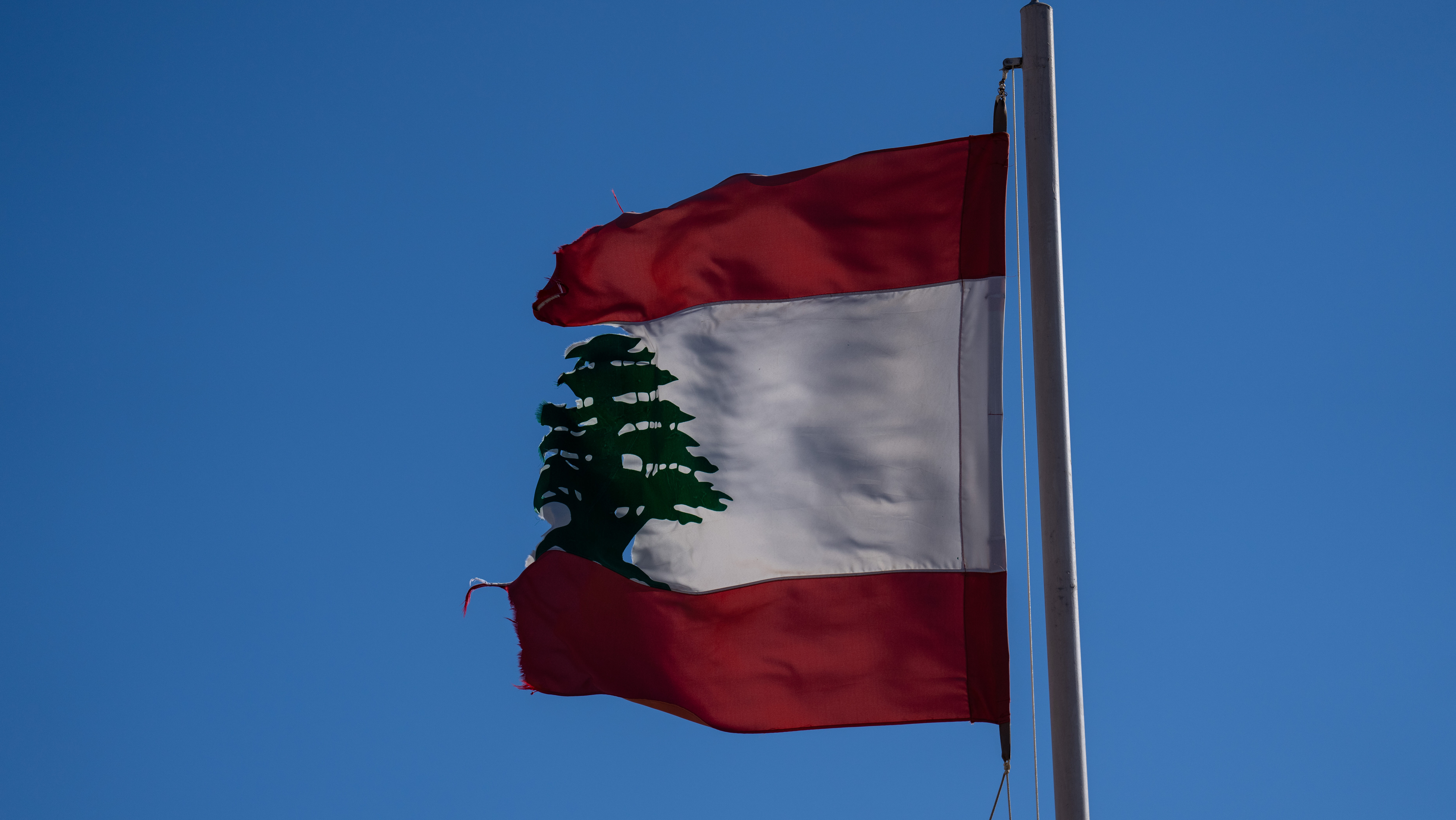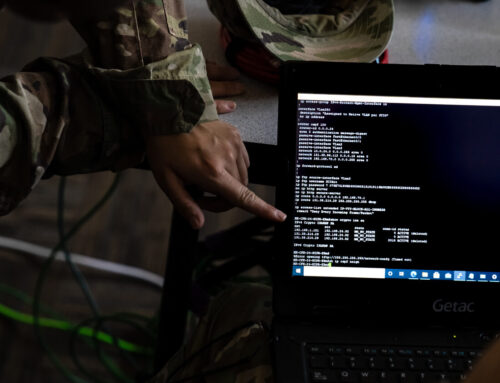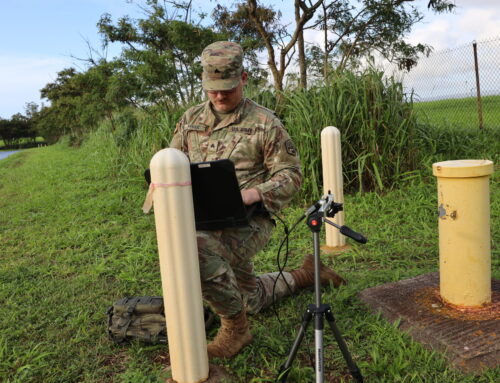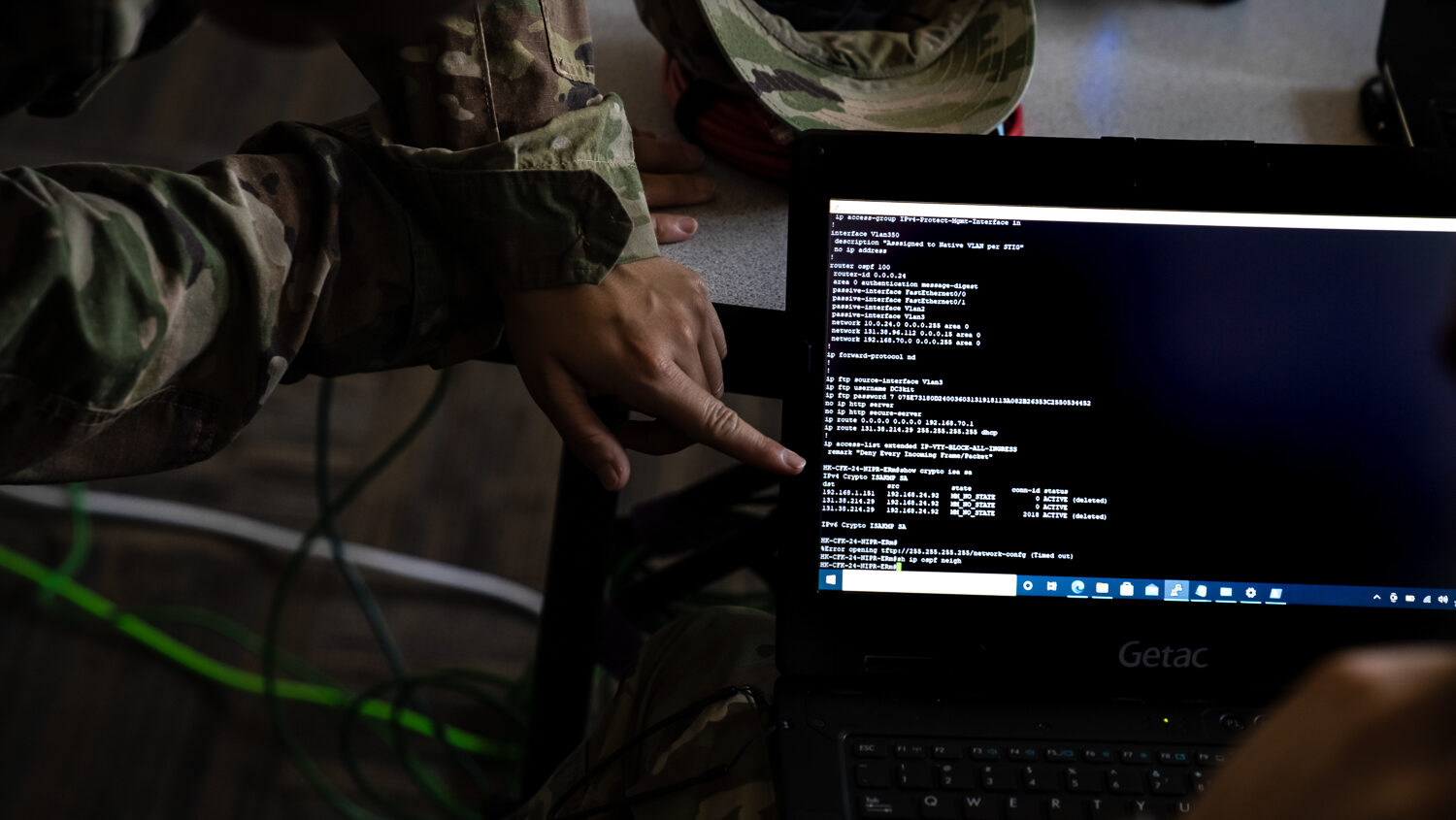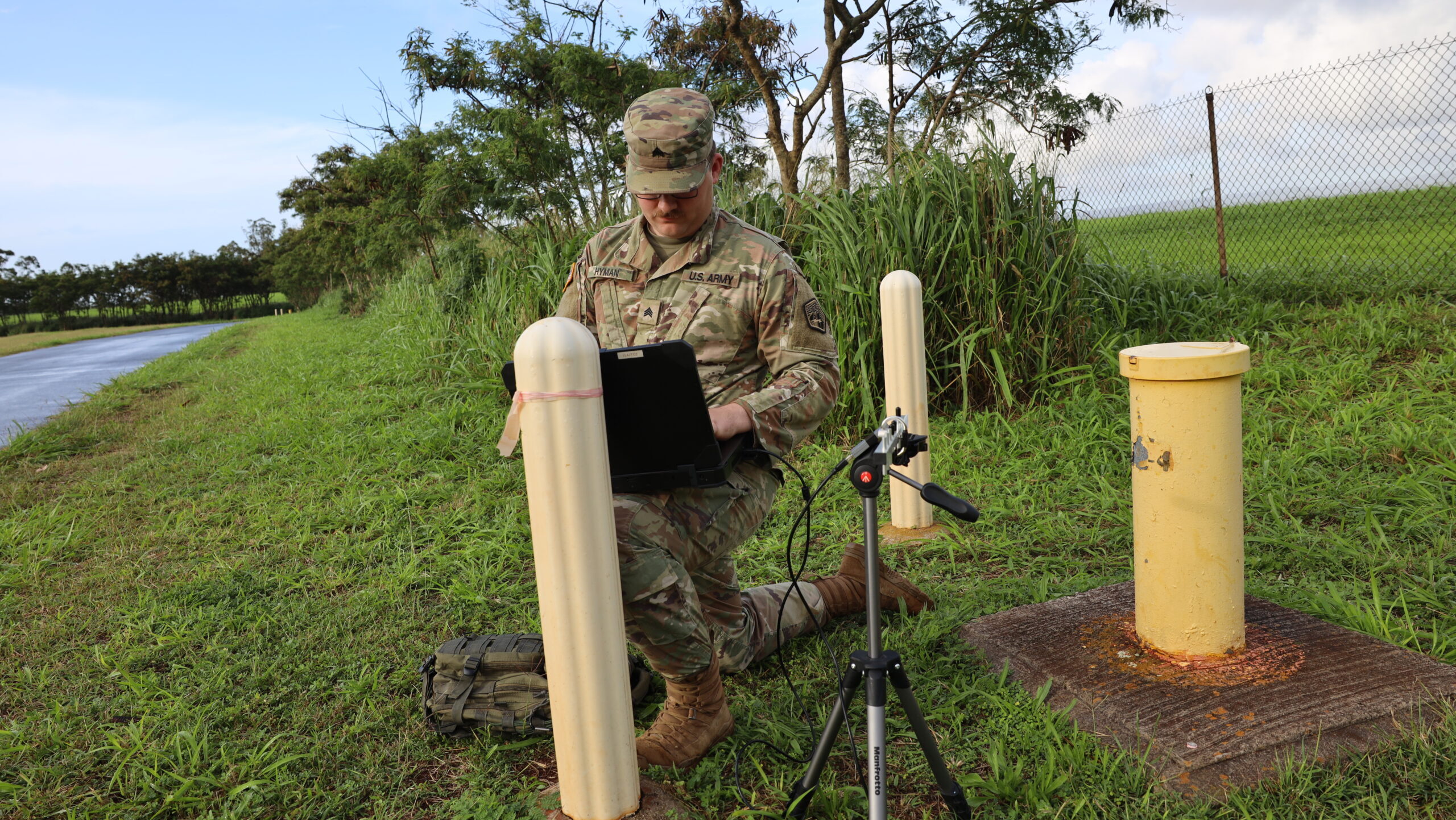A torn Lebanese flag flies on October 3, 2024 in Marjayoun, Lebanon. Israel continued airstrikes on Beirut and its southern suburbs as its military announced a ground offensive in Lebanon, part of what it said would be a “limited” incursion to target Hezbollah forces. (Photo by Carl Court/Getty Images)
BEIRUT — One year ago Monday, the Palestinian group Hamas attacked Israel. A day later, Hezbollah joined in what it called the “Gaza support” front, dragging Lebanon into the conflict. Ever since, the country has been on edge, waiting for what felt like an inevitable all-out invasion from Israel over the border.
The inevitable arrived last week, and the violence wrought so far could presage a much more intense second year of fighting here, with Lebanese citizens are caught between an Israeli rock and a Hezbollah hard place.
Over the past year, the strikes across the border have expanded and diminished on a week by week basis. On the worse days, they would feature Israeli jets soaring overhead and bombs splashing down on what the IDF has called Hezbollah targets. But the last two weeks have seen a major escalation, including multiple direct strikes on Beirut — long seen as a safe haven that Israeli forces would avoid attacking.
For many southern Lebanese, Israel’s declaration of an invasion, which Jerusalem has stated has the goal of “limited, localized” raids designed to push Hezbollah back from its border, has become a last straw. So many have left. The government is estimating that the number of migrants heading north will exceed 1 million — in a country of 5.4 million overall. Tens of thousands of Lebanese also have fled east to neighboring Syria, a dark reversal of time when desperate people from that wartorn nation fled the opposite direction.
Even before the announcement of raids, the aerial campaign was proving brutal for those in the region.
“We couldn’t sleep all night, bombardment sounds never seem to pause. The nights are the worse,” one southerner told Breaking Defense.
She added that when her family decided to leave the south earlier last week, there was no easy way out: The two main paths north, either via Nabatiyeh-Sidon or through the Beqaa Valley, are either blocked by rubble left over from airstrikes or in IDF-identified target zones — meaning braving that route could be more dangerous than staying home amid strikes there.
Those who can’t or won’t leave their homes are stuck taking cover, having nothing to do but offer “prayers” that things won’t escalate to a full incursion beyond the South Litani river. The pace of strikes does not appear to be slowing down — a Reuters tally of statements from Israel found that 70 towns, including predominantly Christian ones, have been ordered to evacuate in the last three days.
On X, an Israel Defense Forces spokesperson has posted several maps of Lebanese cities with red squares superimposed on them, warning civilians to evacuate those areas, as they are near purported Hezbollah activity. “You are located near Hezbollah facilities and interests, and the IDF will act against them in the near future,” one post reads.
What those refugees will find in the north is unclear. Many people have become homeless, and the winter season is imminent. Despite a few incidents where refugees met resistance in Beirut neighborhoods, Lebanese solidarity is largely holding: The city’s residents are busy collecting food and medical supplies, but without a national emergency plan, many families may face harsh days, especially as the temperature begins to drop.
While not as frequent a target as in the south, Beirut, particularly its southern suburb Dahieh, is no longer immune to the sounds of jets screaming overhead and explosions rocking buildings and windows. Israeli air force pilots seem to prefer striking under Lebanon’s beautiful moonlight, adding an extra layer of terror for those who were able to find sleep in the moments of quiet.
“Are we going to die tonight?” my children ask me every night while they rush into my room, awakened from their sleep, not by calls to get ready for school but from bombs. It is easy to see the black and white smoke plumes from these attacks rising above the city.
Mornings are not much better than the nights. People rush to check social media for what disasters happened in the few minutes of sleep they could get, and the situation seems to only grow more dire every sunrise. Many hospitals are near full capacity. In an Oct. 2 report, the Lebanese government said that since the war began, there have been 1,928 killed with 9,290 injured — including 55 killed and 156 injured in the 48 hours period from Sept. 30 to Oct. 2.
Smoke rises above Beirut’s southern suburbs during an Israeli strike on September 27, 2024. A source close to Hezbollah said the massive Israeli strikes on Beirut’s southern suburbs flattened six buildings. (Photo by -/AFP via Getty Images)
While there are no national sirens signaling threats, church bells are doing the duty — and seemingly never get a rest.
On Beirut’s roads, Lebanese Armed Forces are increasingly deployed near embassies. Schools are largely closed, turned into refugee centers for children, adults and old people who migrated from the south, Beqaa Valley and even Dahieh. It’s unclear when children will be able to go back to school, and there are now discussions about online classes — which might fail entirely if Lebanon’s traditionally iffy utility system collapses.
When Hezbollah launched its rockets a year ago in support of Hamas, neither the Lebanese government nor the people were given a choice. Certainly, Hezbollah has its supporters, in the south, Beqaa and the southern suburb of Beirut, but there is no national consensus about this conflict, as the country is divided to sectors and parties. Hezbollah is only one of them, if the most powerful.
Follow Breaking Defense’s full coverage of the region:
Israeli operations in Lebanon should draw on lessons from the past
Lebanon’s military ‘repositioning’ itself as Israel invades – but for what?
‘The King doesn’t lie down to save the pawn’: Why Iran may let Hezbollah face Israel alone
After failure of Oct. 7, with Hezbollah Israel gets the war it trained for
For Lebanon, a war in all but name has finally arrived: Experts
OP ED: How Israel degraded Hezbollah for years to come, in 8 days
US special ops official lays out ‘strategic’ reason for Israel to better protect civilians
In Northern Israel, empty villages and talk of war in Lebanon
In Southern Lebanon, empty villages, ruined crops and fears of what comes next
But as the world has watched the conflict over the past year, watched Hezbollah’s leadership taken out in a shocking manner, watched Iran’s attack on Israel, watched Israel give updates on its “raids” into the country — it is hard not to feel that the Lebanese people have been caught up in something beyond our control.
Many Lebanese, myself included, feel like to the world we are mere numbers: numbers of casualties, migrants, injured people and demolished buildings. While international political and regional military actions might determine the day after, no one in the country right now knows whether they will live to see the sunrise on that day.
Lebanon has been described as a Phoenix that rises from the ashes, but for five consecutive years the ashes have been piling up above the Phoenix’s head. From the 2019 revolution against the ruling authority, to an ongoing economic crisis and the collapse of Lebanon’s currency, to the 2020 port explosion and finally, the start of this war in October 2023, it has been one calamity into another. The most recent, Israel’s invasion, continues now.
When it will end, and what Lebanon will look like when it does, feels impossible to know.


